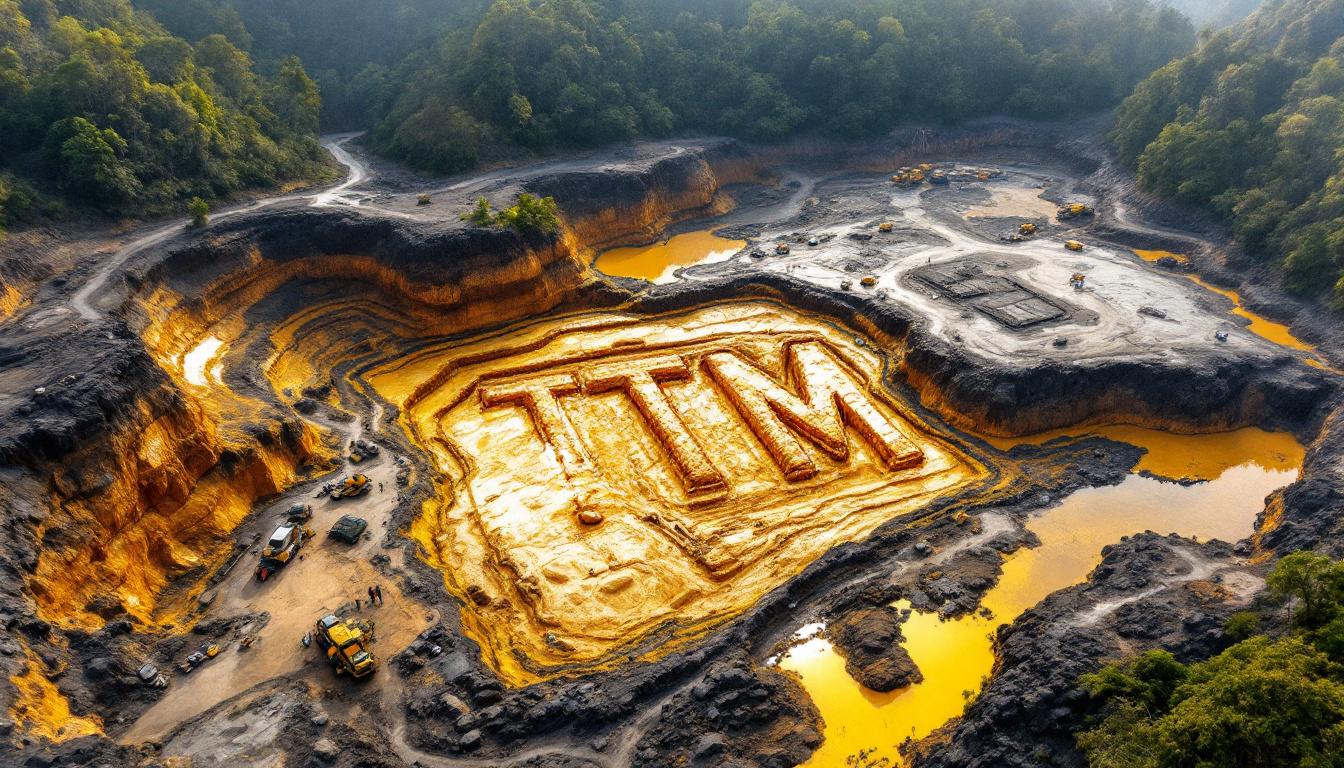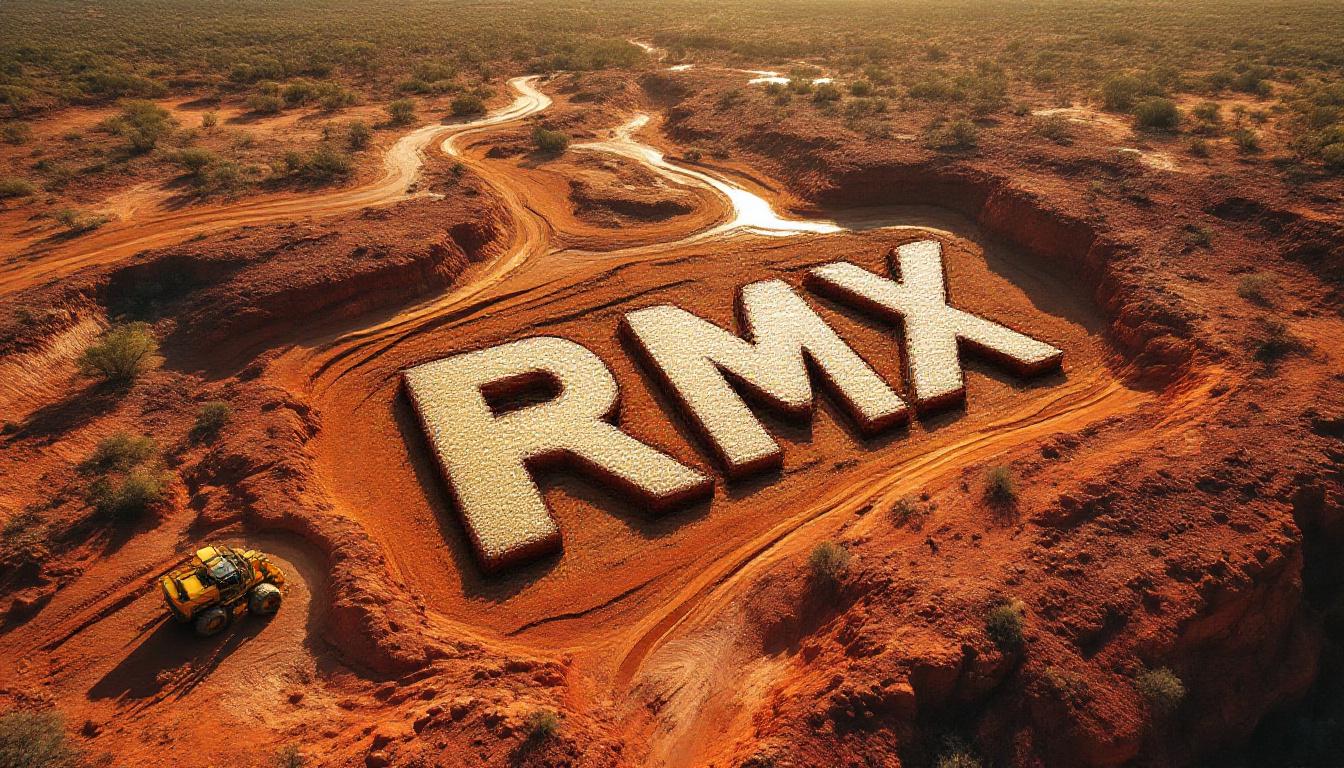TechGen Metals has recently reported exceptional high-grade copper results from its Blue Devil Project, with assay values reaching up to 41% copper from recent rock chip samples. These promising outcomes advance the understanding of the project's potential as a significant copper, gold and silver system in Western Australia's Halls Creek Orogen.
How Do Exceptional Copper Grades Impact Exploration?
The latest rock chip sampling campaign has delivered a series of outstanding results, reinforcing the prospectivity of the Blue Devil Project. Detailed sampling has provided multiple high-grade copper readings, with notable values including 41%, 34.4% and 30.6% Cu. These results were obtained from gossanous outcrops and quartz veins distributed across the project area, showcasing the varying nature of the mineralisation.
Key points include:
- Assay results confirming exceptionally high-grade copper content.
- Multiple sampling points strengthening the geological model.
- Identification of key copper-bearing minerals using X-Ray Diffraction (XRD) analysis.
The significance of these findings is bolstered by historical data, which recorded peak values of 50.5% copper, accompanied by 18.5g/t gold and 84g/t silver. Such high-grade discoveries not only confirm the presence of a copper-rich system at Blue Devil but also underscore its value as a target-rich exploration area.
What Can Advanced Geophysics Reveal?
In addition to the impressive assay results, recent geophysical surveys have considerably enhanced the understanding of the subsurface geology at Blue Devil. An airborne TargetEM survey has identified three strong, discrete late-time conductors strategically positioned above a magnetic intrusive body. This geophysical signature is particularly compelling, as it suggests robust exploration targets that warrant further investigation.
The geophysical survey revealed important insights:
- Three conductors have been identified between 150-200 metres below the surface.
- The conductors appear to wrap around the western and southern extents of a magnetic intrusion.
- Their alignment parallel to two major northeast-southwest striking faults creates an ideal structural setting for mineralisation.
- The integration of high-grade surface copper data with these conductors establishes a textbook exploration model.
This combination of strong geophysical signals together with high-grade assays is a strong indicator of an underlying primary copper system. It opens the possibility of discovering a deeper copper sulphide body that may mirror the high-grade oxidised zone seen at the surface.
How Does the Copper Oxide Mineralogy Inform Exploration?
An essential component of the recent research at Blue Devil has been the in-depth analysis of copper oxide mineralogy using XRD. The analysis has identified four key copper-bearing minerals:
- Malachite: A green copper carbonate hydroxide that forms as a common copper oxide mineral, signalling near-surface weathering of copper sulphides.
- Cuprite: A red copper(I) oxide representing a high-grade copper oxide mineral with 88.8% Cu; it denotes enrichment processes.
- Brochantite: A green copper sulfate that develops in oxidised zones of copper deposits.
- Atacamite: A green copper chloride hydroxide that typically forms under arid conditions as primary copper minerals weather.
This suite of secondary minerals is highly illustrative of the oxidised zone present in many copper deposits. Their presence implies that, below the oxidised cap, there is a potential for a significant primary copper sulphide system. The mineralogical data provides essential clues regarding fluid pathways and the geochemical evolution of the deposit, thereby refining the overall exploration model.
What Geological Models May Explain the Deposit?
The diversity of geological settings capable of hosting copper mineralisation suggests several possible deposit models at the Blue Devil Project. Here are the predominant models being considered:
-
Porphyry Copper Deposits:
- These are large, low-grade deposits formed from hydrothermal fluids associated with intrusive igneous bodies.
- The magnetic intrusion observed at Blue Devil, along with the associated structural controls, is consistent with a porphyry system where copper mineralisation is typically disseminated or focused in veins.
-
Iron Oxide Copper-Gold (IOCG) Deposits:
- Characterised by the presence of abundant iron oxides (such as magnetite or hematite) associated with copper and gold mineralisation.
- The structural complexity, marked by major faults and the identified magnetic intrusion, points towards an IOCG model.
-
Skarn Deposits:
- Formed when intrusive bodies interact with carbonate-rich sedimentary rocks, resulting in distinctive alteration zones.
- The regional geology of the Halls Creek Orogen includes carbonate units that could facilitate the formation of a skarn deposit under suitable conditions.
- Sedimentary Copper Deposits:
- These deposits form within sedimentary rock sequences where copper-bearing fluids have permeated.
- The presence of sedimentary units at the Blue Devil Project suggests an alternate model where mineralisation could be disseminated along permeable horizons.
Each of these models is supported by different aspects of the geological, geochemical and geophysical data from the project. The identification of secondary copper-bearing minerals at the surface, in concert with strong geophysical conductors, makes a compelling case for the existence of a significant primary copper system at depth.
What Steps Are Being Taken to Advance the Project?
TechGen Metals is methodically advancing the Blue Devil Project with a systematic approach that integrates historical data with contemporary exploration techniques. The company has laid out a detailed strategy to further de-risk the project and unlock its full potential:
- Traditional Owner consultations are scheduled in the next 4-6 weeks, paving the way for subsequent field activities.
- External independent satellite alteration studies are underway, and results are expected shortly, which will provide additional insights into the alteration systems and mineralisation.
- A combination of modern geophysics, comprehensive surface geochemistry and the integration of historical drilling data is constructing a robust exploration model.
Managing Director Ashley Hood remarked, "We are continuing to advance the Blue Devil Project methodically and diligently working through historical data and reports, studying the geology and structural setting and combining that information with the new modern geophysics data acquired over the project." This comment highlights the balanced approach adopted by TechGen Metals, blending modern technology with traditional geological understanding.
Why Does the Blue Devil Project Matter for Investors?
The Blue Devil Project offers a compelling investment case driven by several key factors:
-
Exceptional Copper Grades:
- Multiple rock chip samples that exceed 30% copper illustrate the sheer high-grade nature of the mineralisation.
-
Modern Exploration Techniques:
- The application of cutting-edge geophysical methods is providing new insights into an area with historically significant yet underexplored mineralisation.
-
Strategic Metals Focus:
- The combination of copper and gold is particularly attractive in the current market, where diversifying into high-grade systems has become increasingly important.
- A Methodical Approach:
- TechGen Metals is implementing a structured strategy that intertwines modern techniques with historical data, thereby reducing risk and opening new exploration avenues.
For investors and analysts tracking copper and gold exploration companies, the Blue Devil Project represents a unique opportunity. The combination of outstanding surface assays, comprehensive geophysical surveys and a structured project advancement strategy sets this exploration play apart in a competitive market.
With Traditional Owner meetings scheduled and additional geochemical and geophysical results anticipated in the coming weeks, TechGen Metals is systematically lowering project risks and advancing towards the next phase of development. The integration of modern science with a robust geological framework ensures that the Blue Devil Project remains one of the most compelling copper exploration ventures in Western Australia.
Looking to Unlock High-Grade Copper Investment Potential?
Discover how TechGen Metals is advancing its Blue Devil Project with exceptional high-grade copper results of up to 41% and promising geophysical signatures. For investors seeking exposure to a methodically developed copper exploration opportunity in Western Australia's resource-rich Halls Creek Orogen, visit techgenmetals.com.au to learn more about this compelling copper, gold and silver system.




